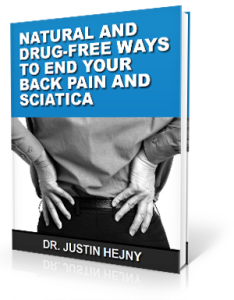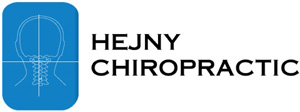 Astoundingly, 80% of adults experience low back pain at some time in their life. It is the leading reason for people to miss work days and the number one contributor to job-related disability. In a recently conducted survey, more than a quarter of adults reported having low back pain in the last 3 months.
Astoundingly, 80% of adults experience low back pain at some time in their life. It is the leading reason for people to miss work days and the number one contributor to job-related disability. In a recently conducted survey, more than a quarter of adults reported having low back pain in the last 3 months.
Low back pain can be dull and aching, sharp and stabbing, or anywhere in between. The pain can be so bad it leaves the sufferer incapacitated. Both genders are affected equally. Sometimes lower back pain occurs slowly over time, or it may begin all of a sudden if you lift something heavy incorrectly. It is often due to age-related changes to the spine or a sedentary lifestyle.
Most low back pain only lasts a few days to a few weeks and resolves on its own with self-care and rest. Low back pain is often mechanical in nature. This means there is a problem in the way the spine, discs, nerves, and muscles fit together and move.
The impact of lower back pain has gotten worse in recent years. A study done back in 1999 ranked the most burdensome conditions in America and put low back pain in 6th place. In 2010, low back pain ranked at 3rd place following only heart disease and pulmonary disease.
Table of Contents
How Is the Back Constructed?
It is important to understand how the back works so as to know where the pain is coming from. The lower back includes 5 vertebrae – L1 through L5. They support much of the weight of the upper body. There are spaces in between the vertebrae that have round, rubber-like pads called discs. These discs are similar to shock absorbers and cushion the bones as the body moves. Ligaments hold these vertebrae in place and tendons attach the muscles to the spine. Rooted to the spinal cord are 31 pairs of nerves that control body movements and send signals to the brain.
To learn more about the connection between head and neck injuries and low back pain, download our free e-book by clicking the image below.
What Causes Back Pain?
Spondylosis – a term referring to general degeneration of the spine because of normal wear and tear in the joints, bones, and discs – is often the reason for low back pain as one ages. Some examples of this type of mechanical issue can be:
- Intervertebral disc degeneration: One of the most common issues that happens when the rubbery discs lose integrity due to normal aging. The discs lose their cushioning ability and can cause pain when one bends or moves the back.
- Radiculopathy: When a spinal nerve root becomes compressed, injured, or inflamed, the result is pain, numbness, and tingling that travels or radiates to the area of the body the nerve is a part of. It often happens when a herniated disc or spinal stenosis traps the nerve root.
- Sprains and strains: This is to blame for most acute back pain. Sprains are the end result of overstretching or tearing ligaments. Strains are tears of the muscle or tendon. They can both happen if you lift something improperly or something that is too heavy. This may also cause muscle spasms in the back that are quite painful.
- Sciatica: A form of radiculopathy that occurs due to a compression of the sciatic nerve. This nerve is the largest in the entire body and travels through the buttocks and branches off down the back of each leg. The pain associated with sciatica can be a shock-like or burning sensation in the lower back, buttocks, and down the back of one leg sometimes reaching into the foot.
- Herniated or ruptured discs: Low back pain is caused when the intervertebral discs become compressed and herniate (bulge outward) or rupture.
- Spondylolisthesis: A vertebra of the lower spine slips out of place and pinches the nerves exiting the spinal column.
- Skeletal irregularities: Scoliosis, lordosis, and other congenital anomalies.
- Spinal stenosis: Narrowing of the spinal column that puts pressure on the spinal cord and nerves.
- A trauma: Tendons, ligaments, and muscles become damaged and result in lower back pain due to sporting accidents, vehicle crashes, or trips and falls.
Caring for the Spine to Avoid Low Back Pain
It most often depends on whether your low back pain is chronic or acute when trying to figure out how to care for it. Traditional ways to care for low back pain are listed below:
- Physical therapy: These programs work to strengthen core muscle groups that help to support the low back, promote good posture, and improve flexibility.
- Activity: Bed rest is not suggested. Stretching exercises and normal daily routines should be returned to as soon as possible. Avoid movements that bring about pain.
- Strengthening exercises: These are not suggested for acute back pain but are recommended for chronic low back pain. This is vital for people that have skeletal irregularities. Always check with your doctor.
- Hot or cold packs: This has not been proven to resolve low back injuries. However, they can help ease pain and inflammation for any type of low back pain.
Upper Cervical Chiropractic Care
Here at Hejny Chiropractic in Spring Lake Park, Minnesota, we help our patients with low back pain by addressing a possible problem in the top bones of the spine. Why would this cause low back pain? If the C1 or C2 vertebra is out alignment, the head becomes off balance. This causes the spine to shift and twist to try to keep the head in its proper place. This can lead to all sorts of issues with the spine, such as many of those mentioned above.
We use a gentle method to realign the bones of the neck. This is often all that is needed to see an improvement in back pain. It is also vital in keeping low back pain from occurring later in life.
To schedule a complimentary consultation with Dr. Hejny, call our Spring Lake Park office at 763-230-0116. You can also click the button below.
 If you are outside of the local area, you can find an Upper Cervical Doctor near you at www.uppercervicalawareness.com.
If you are outside of the local area, you can find an Upper Cervical Doctor near you at www.uppercervicalawareness.com.
